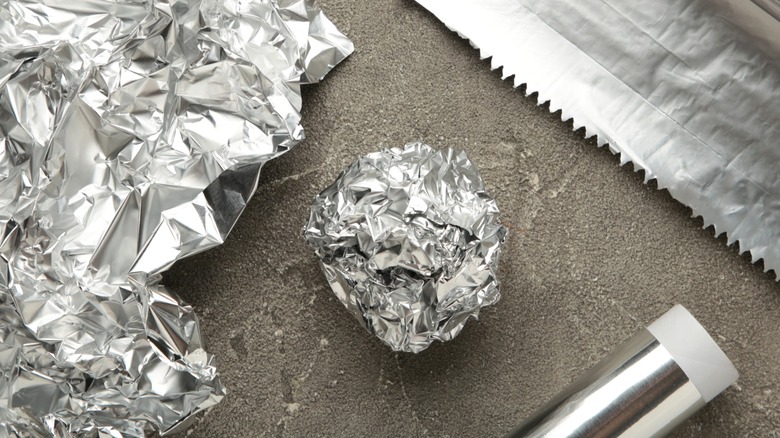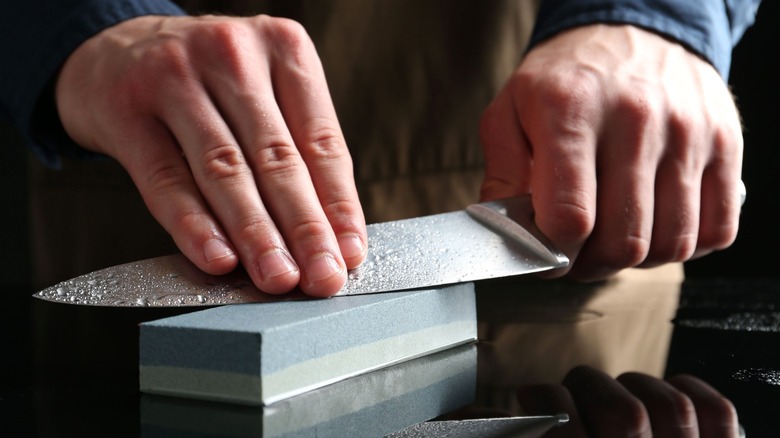Why You Shouldn't Use This Aluminum Foil Hack To Sharpen Dull Knives
A sharp knife is a chef's best friend. It slices and dices through foods like butter, creating perfectly sized ingredients destined to become your next culinary gem. Dull knives, on the other hand, are your worst enemy. They require the user to exert more force when cutting, which reinforces bad knife skills and increases the risk of injury from slippage. Truth be told, most people should be sharpening their kitchen knives more often. But without a bona fide sharpener (the honing rod in your knife block doesn't qualify), what's a person to do?
Some crafty folks online claim to have devised a way to fine-tune dull knives using only a humble piece of aluminum foil. The idea is that by either folding it over many times or crumpling it into a ball, one can run the foil down the length of the knife, giving the blade an acute edge. However, according to an expert on keeping knives sharp, Timo Horl, the founder and CEO of knife sharpener brand HORL, the notion that a ball of aluminum foil can enhance dull knives is a bunch of hokum. "I do not recommend sharpening knives with aluminum foil," he said. "It won't work, and it can also be dangerous."
Horl explained in detail why this "clever" hack is bogus. "The idea of sharpening knives with aluminum foil is essentially a myth. The truth is, since aluminum foil is much softer than knife steel, it can't meaningfully reshape or sharpen the edge of a blade," he said. "Proper sharpening requires removing material from the edge, which calls for hard materials like diamond or sharpening stones. When a knife is truly dull, aluminum foil won't make a difference — proper sharpening with the right tools is necessary."
Valid ways to sharpen dull knives
In response to yet another instance of don't believe everything you see online, Timo Horl made the case that folks should stick to using aluminum foil for grilling veggies and leave the knife sharpening to legitimate devices. He even had a couple of suggestions regarding what would work best. "Japanese whetstones are particularly well-suited for this approach, as they allow for work with varying grits to remove material delicately and achieve a new level of sharpness," Horl said. Still, unless you've spent a decent amount of time using a whetstone, it may prove challenging. Horl admitted, "[T]his method requires considerable practical experience, as maintaining the correct sharpening angle by hand is crucial for success."
A more beginner-friendly approach would be utilizing a rolling knife sharpener. Horl said, "This system consists of two components: an angle support with powerful magnets that hold the knife at the optimal 15- or 20-degree angle and a rolling sharpener with diamond and ceramic surfaces that restore the knife edge to full sharpness without prior knowledge or practice."
By placing the angle support on a stable surface, you can roll the diamond surface along the length of the blade and give dull knives a suitable edge in less than 10 minutes. Then, spend a couple more minutes using the ceramic side to hone the knife, removing any burrs in the process. Lastly, remember to clean the blade to remove any material you wouldn't want on your food. It is worth mentioning that this technique isn't an effective way to sharpen serrated knives in your kitchen, but for your trusty chef's knife, it doesn't get much easier than using a rolling sharpener.

